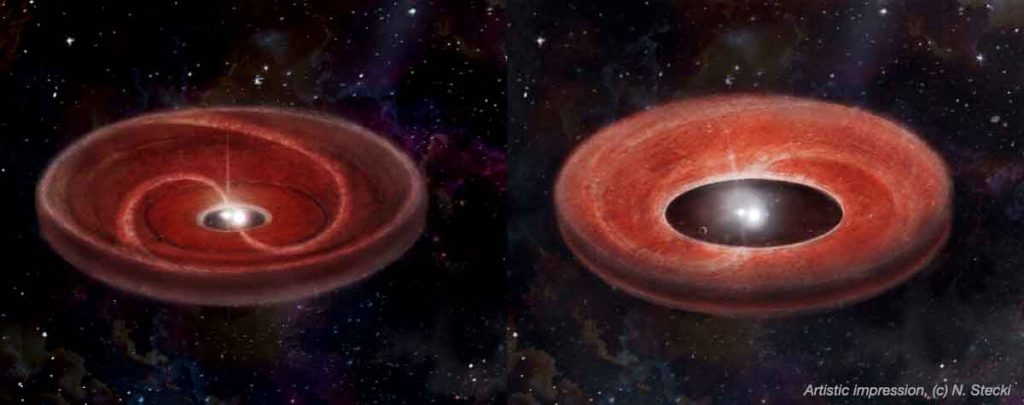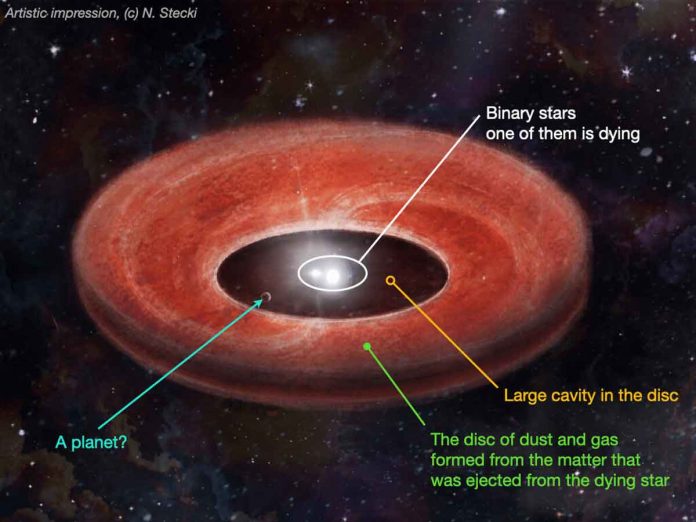KU Leuven astronomers have discovered that some types of stars can possibly still form planets. Because of this, theories on planet formation will need to be adjusted.
Earth was formed not long after the sun. Sun started to burn 4.6 billion years ago and the matter around it clumped into protoplanets. The birth of the planets in that protoplanetary disc explains why they all orbit in the same plane.
But such discs of dust and gas needn’t only surround new born stars. They can also develop independently from star formation. When the end approaches for a medium-sized star, it catapults the outer part of its atmosphere into space. Then it slowly dies out as a so-called white dwarf. The gravitational pull of the second star causes the matter ejected by the dying star to form a flat. The disc resembles the protoplanetary discs that astronomers observe around young stars elsewhere in the Milky Way.
The discs surrounding so-called evolved binary stars not uncommonly show signs that could point to planet formation. This has been discovered by an international team of astronomers.
Second-generation planets
That planet might not have formed at the very beginning of one of the binary stars’ life. It may have formed at the very end of one of the binary stars’ life. The astronomers found strong indications for the presence of such planets. The astronomers drawn up an inventory of evolved binary stars in our Milky Way. Astronomers counted 85 of such binary star pairs. In 10 pairs, they came across a disc with a large cavity on the infrared images.

Current theories put to the test
The new study confirms the existence of planets around evolved binary stars. Planets were only formed after one of the stars had reached the end of its life.
The KU Leuven astronomers want to verify their hypothesis. They will use the big telescopes of the European Southern Observatory in Chile. They will take a closer look at the ten pairs of binary stars.

